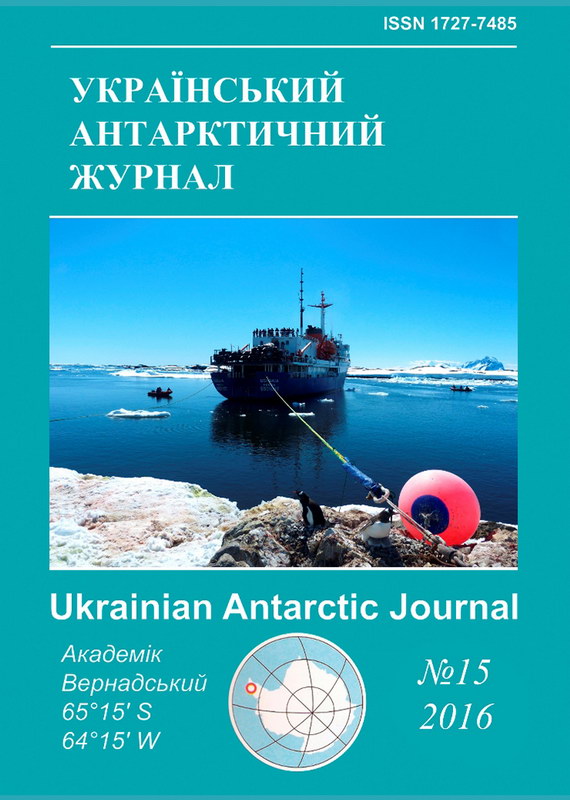The influence of collagen fragments extracted from the antarctic region fish scales on obesity development
- Antarctic fishes,
- scales,
- collagen fragments,
- obesity

This work is licensed under a Creative Commons Attribution-NonCommercial-NoDerivatives 4.0 International License.
Abstract
Collagen is the most abundant protein in vertebrates, which constitutes about 30% of the total proteins and has been widely used in food, cosmetic, biomedical, and pharmaceutical industries. The conventional source of collagen is from bovine and pig. However, the outbreak of prion diseases, such as bovine spongiform encephalopathy, has resulted in anxiety among users of collagen derived from these land animals. Thus, there is need to find an alternative source of collagen. Fish is one of the candidate as such alternative sources because fish is unlikely to be associated with prion diseases. In addition, their skin, bones, scales, are rich in collagen type I. A simple method has been used for the isolation of collagen from the Antarctic region fish scales. At first, the scales were solublized using acetic acid containing EDTA. Then the solublized collagen was precipitated by using NaCl. The results of sodium dodecyl sulfate polyacrylamide gel electrophoresis confirmed the purity of extracted collagen and showed that obtained collagen was composed of two different α-chains (αl and α2), which were in accordance with the type I collagen. β component was also found in lesser amounts in this collagen samples. Next, collagen samples were hydrolyzed with pepsin at 370C for 24 h. According to obtained results collagen was cleaved into low-molecular weight fragments and peptides with molecular weight ranging from 26 to 2 kDa. The effect of collagen fragments on obesity development was investigated using animal model of obesity. For this purpose, the rats were fed with a high-calorie diet, which consisted of a standard meal (60%), pork fat (10%), eggs (10%), sugar (9%), peanuts (5%), dry milk (5%) and sunflower oil (1%) for four weeks. After that the animals were orally administrated with marine collagen fragments extracted from the Antarctic region fish scales each second day for five consecutive weeks. It was shown that treatment with collagen fragments led to decrease of body weight and body mass index of the animals, which were on high-calorie diet (HCD). Found changes could be result of decrease of food intake and increase of water intake in compare with the rats in HCD group.
References
- Brown, W., Bays, G. (2014). JCL Roundtable: Clinical management of individuals with obesity. Journal of Clinical Lipidology, 8, 237-248.
- Gómez Guillén, M. C., Giménez, B., López-Caballero, M. E. et al. (2011). Functional and bioactive properties of collagen and gelatin from alternative sources: A review. Food Hydrocolloids, 25, 1813-1827.
- Grienke, U., Silke, J., Tasdemir, D. (2014). Bioactive compounds from marine mussels and their effects on human-health. Food Chemistry, 142, 15(155), 48-60.
- Kaewdang, O., Benjakul, S., Kaewmanee, T. et al. (2014). Characteristics of collagens from the swim bladders of yellowfin tuna (Thunnus albacares). Food Chemistry, 15(155), 264-270.
- Kimura, S., Ohno, Y., Miyauchi, Y. et al. (1987). Fish Skin Type I Collagen: Wide Distribution of an a3 Subunit in Teleosts. Comparative Biochemistry and Physiology, 88B(1), 27-34.
- Laemmli, K. (1970). Cleavage of structural proteins during the assembly of the head of bacteriophage T4. Nature, 227(1), 680-685.
- Moran, T. H. (2000). Cholecystokinin and satiety: current perspectives. Nutrition, 16(10), 858-865.
- Ngo, D.-H., Vo, T.-S., Ngo, D.-N. et al. (2012). Biological activities and potential health benefits of bioactive peptides derived from marine organisms. International Journal of Biological Macromolecules, 51, 378-383.
- Novelli, E., Diniz, Y., Galhardi, C. (2007). Antropometrical parameters and markers of obesity in rats. Laboratory animals, 41, 111-119.
- Reaven, G. M. (2008). Insulin resistance: the link between obesity and cardiovascular disease. Endocrinol Metab Clin North Am, 37, 581-601.
- Seale, P., Lazar, M. (2009). Brown Fat in Humans: Turning up the Heat on Obesity. Diabetes, 58(7), 1482-1484.
- Senevirathne, M., Kim, S. K. (2012). Utilization of seafood processing by-products: Medicinal applications. Advances in Food and Nutrition Research, 65, 495-512.
- Shen, X., Tang, Q., Huang, J. et al. (2010). Vitamin E regulates adipocytokine expression in a rat model of dietary-induced obesity. Experimental Biology and Medicine, 235, 47-51.
- Shoulders, M. D., Raines, R. T. (2009). Collagen structure and stability. Annual Review of Biochemistry, 78, 929-958.
- Takahashi, K. (2004). Translational medicine in fish-derived peptides: from fish endocrinology to human physiology and diseases. Endocr J., 51, 1-17.
- Wang, H., Fu, Z., Han, C. (2014). The Potential Applications of Marine Bioactives Against Diabetes and Obesity. American Journal of Marine Science, 2(1), 1-8.
- World Health Organization. Obesity and overweight. World Health Organization. WHO Fact sheet. 2015. http://www.who.int/mediacentre/factsheets/fs311/en/ .
- Zhang, F., Wang, A., Li, Z. et al. (2011). Preparation and Characterization of Collagen from Freshwater Fish Scales. Food and Nutrition Sciences, 2, 818-823.

